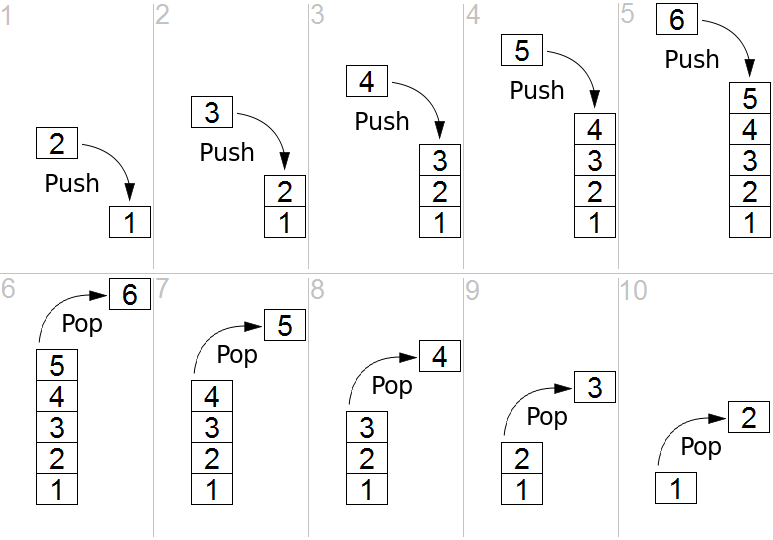Stack: Difference between revisions
Mr. MacKenty (talk | contribs) No edit summary |
Mr. MacKenty (talk | contribs) (→stack) |
||
| Line 18: | Line 18: | ||
This video discusses the C programming language, but the content is clear to describe stack. | This video discusses the C programming language, but the content is clear to describe stack. | ||
<html> | |||
<iframe width="560" height="315" src="https://www.youtube.com/embed/9Tp8wHD66lw" frameborder="0" allowfullscreen></iframe> | <iframe width="560" height="315" src="https://www.youtube.com/embed/9Tp8wHD66lw" frameborder="0" allowfullscreen></iframe> | ||
</html> | |||
== Standards == | == Standards == | ||
Revision as of 13:12, 5 December 2016

In computer science, a stack is an abstract data type that serves as a collection of elements, with two principal operations: push, which adds an element to the collection, and pop, which removes the most recently added element that was not yet removed. The order in which elements come off a stack gives rise to its alternative name, LIFO (for last in, first out). Additionally, a peek operation may give access to the top without modifying the stack.
The name "stack" for this type of structure comes from the analogy to a set of physical items stacked on top of each other, which makes it easy to take an item off the top of the stack, while getting to an item deeper in the stack may require taking off multiple other items first[2].
Access methods of stack[edit]
- push
- pop
- isEmpty
stack[edit]
This video discusses the C programming language, but the content is clear to describe stack.
Standards[edit]
- Describe the characteristics and applications of a stack.
- Construct algorithms using the access methods of a stack.
See Also[edit]
External Links[edit]
References[edit]
- ↑ http://www.flaticon.com/
- ↑ https://en.wikipedia.org/wiki/Stack_(abstract_data_type)
- ↑ By Maxtremus - Own work, CC0, https://commons.wikimedia.org/w/index.php?curid=44458752
